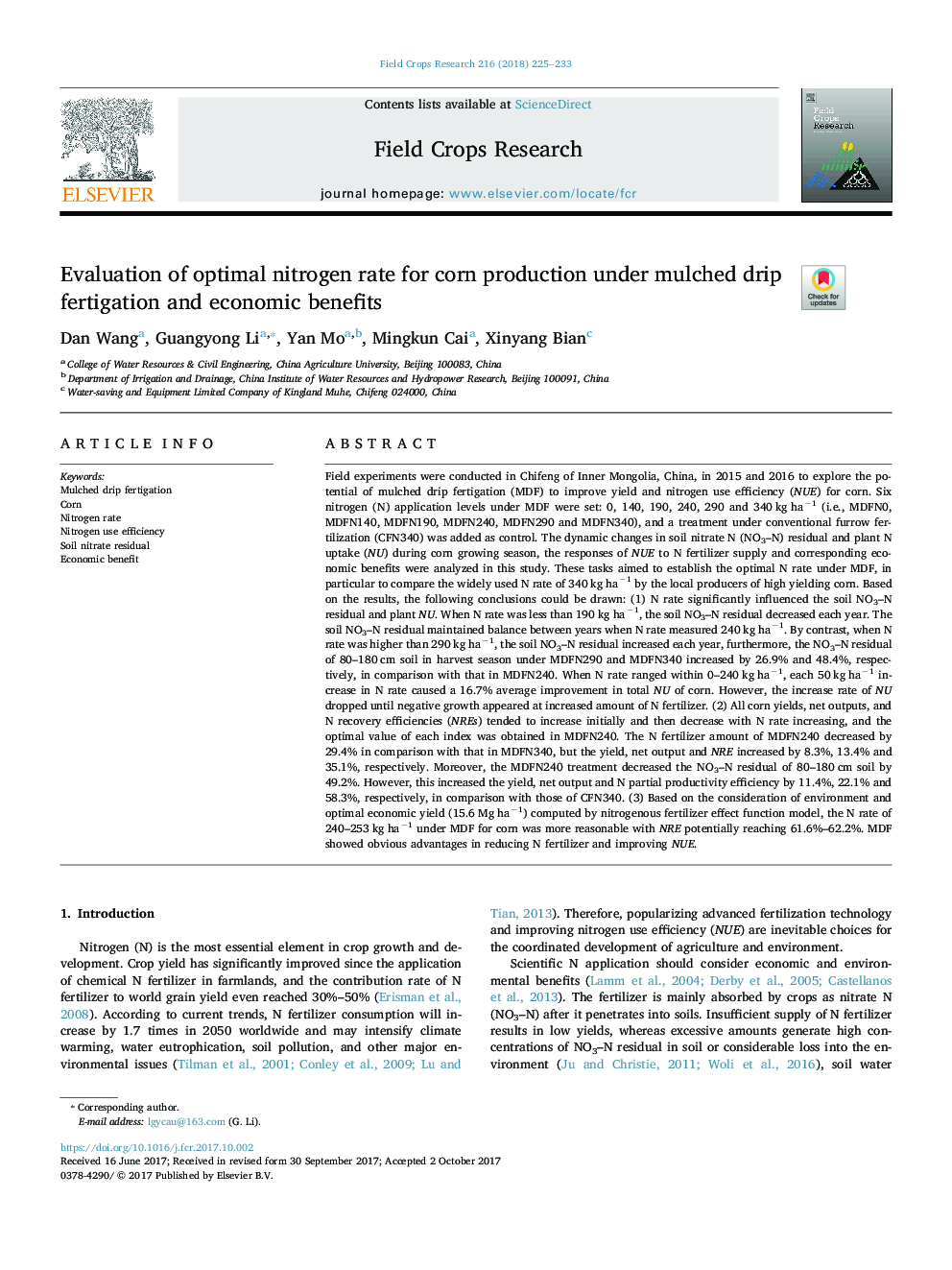| Article ID | Journal | Published Year | Pages | File Type |
|---|---|---|---|---|
| 8879449 | Field Crops Research | 2018 | 9 Pages |
Abstract
Field experiments were conducted in Chifeng of Inner Mongolia, China, in 2015 and 2016 to explore the potential of mulched drip fertigation (MDF) to improve yield and nitrogen use efficiency (NUE) for corn. Six nitrogen (N) application levels under MDF were set: 0, 140, 190, 240, 290 and 340 kg haâ1 (i.e., MDFN0, MDFN140, MDFN190, MDFN240, MDFN290 and MDFN340), and a treatment under conventional furrow fertilization (CFN340) was added as control. The dynamic changes in soil nitrate N (NO3-N) residual and plant N uptake (NU) during corn growing season, the responses of NUE to N fertilizer supply and corresponding economic benefits were analyzed in this study. These tasks aimed to establish the optimal N rate under MDF, in particular to compare the widely used N rate of 340 kg haâ1 by the local producers of high yielding corn. Based on the results, the following conclusions could be drawn: (1) N rate significantly influenced the soil NO3-N residual and plant NU. When N rate was less than 190 kg haâ1, the soil NO3-N residual decreased each year. The soil NO3-N residual maintained balance between years when N rate measured 240 kg haâ1. By contrast, when N rate was higher than 290 kg haâ1, the soil NO3-N residual increased each year, furthermore, the NO3-N residual of 80-180 cm soil in harvest season under MDFN290 and MDFN340 increased by 26.9% and 48.4%, respectively, in comparison with that in MDFN240. When N rate ranged within 0-240 kg haâ1, each 50 kg haâ1 increase in N rate caused a 16.7% average improvement in total NU of corn. However, the increase rate of NU dropped until negative growth appeared at increased amount of N fertilizer. (2) All corn yields, net outputs, and N recovery efficiencies (NREs) tended to increase initially and then decrease with N rate increasing, and the optimal value of each index was obtained in MDFN240. The N fertilizer amount of MDFN240 decreased by 29.4% in comparison with that in MDFN340, but the yield, net output and NRE increased by 8.3%, 13.4% and 35.1%, respectively. Moreover, the MDFN240 treatment decreased the NO3-N residual of 80-180 cm soil by 49.2%. However, this increased the yield, net output and N partial productivity efficiency by 11.4%, 22.1% and 58.3%, respectively, in comparison with those of CFN340. (3) Based on the consideration of environment and optimal economic yield (15.6 Mg haâ1) computed by nitrogenous fertilizer effect function model, the N rate of 240-253 kg haâ1 under MDF for corn was more reasonable with NRE potentially reaching 61.6%-62.2%. MDF showed obvious advantages in reducing N fertilizer and improving NUE.
Related Topics
Life Sciences
Agricultural and Biological Sciences
Agronomy and Crop Science
Authors
Dan Wang, Guangyong Li, Yan Mo, Mingkun Cai, Xinyang Bian,
